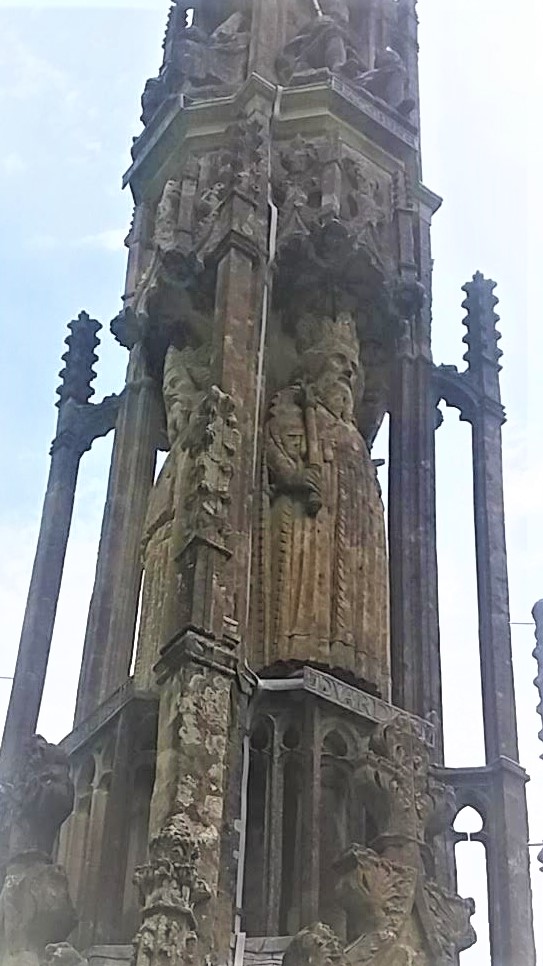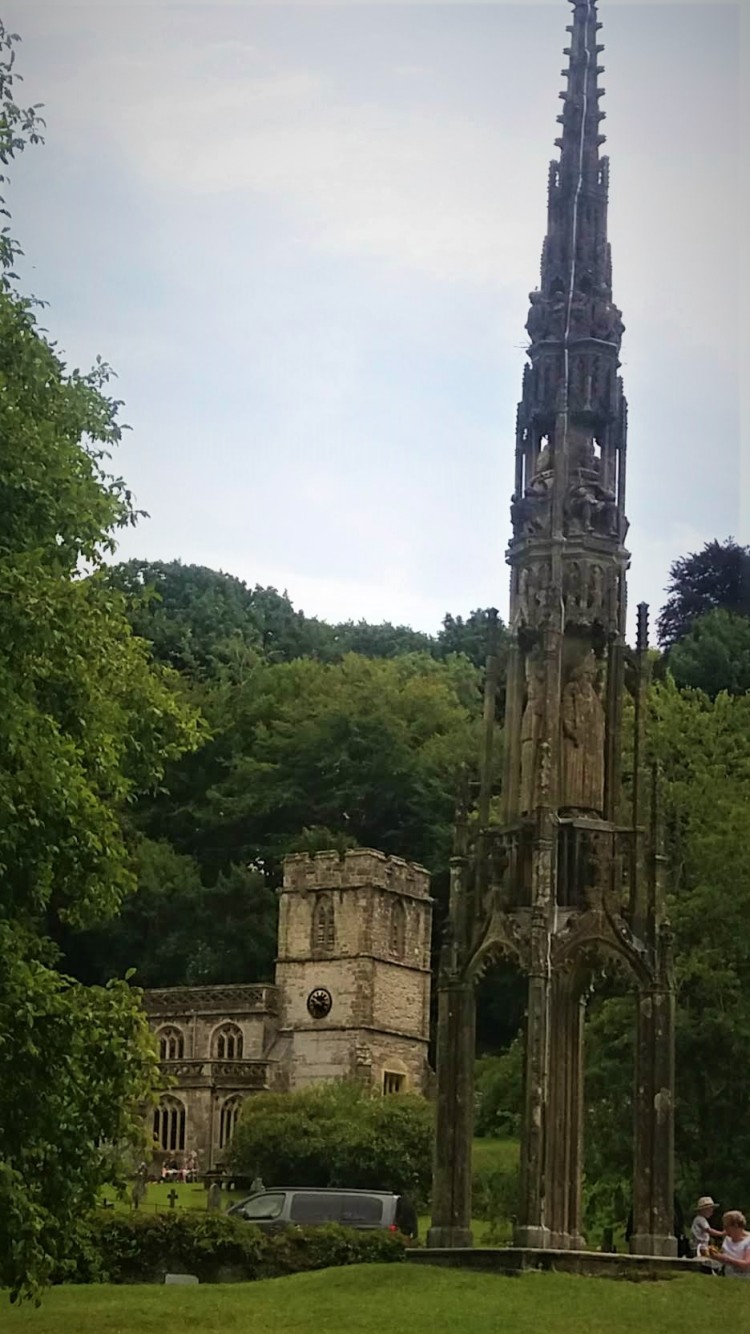In the back of the beautiful Stourhead gardens stands a mysterious piece of old Bristol–the Bristol High Cross. When you first see it, you almost think it might be a modern folly, but it is the ‘real thing’, a medieval cross. In the 1700’s such relics of the past were considered old-fashioned and valueless; in the case of the Bristol High Cross, it was deemed a nuisance since it was blocking the growing traffic in the town centre. Hence, after many complaints, it was dismantled, re-erected on the green by Bristol Cathedral…then taken down again and left in a sorry, discarded pile. Fortunately, Stourhead’s owner, Henry Hoare, saw the ruined cross, decided to rescue it and duly rebuilt it in his marvellous gardens in Wiltshire.
Now there is a bit of a mystery about the cross. One of its four statues is said, by long tradition, to be Edward IV. However, although it has his name on the plinth, it certainly does not look like any other contemporary statue or portrait of Edward. Now, not many medieval statues are life-like, they are often idealised…but the clothes, hair and facial hair are not from his period… there is another huge problem with this idea that this statue is Edward IV.
The problem is this–the cross is believed to have been built in 1373! This was the reign of Edward IV’s ancestor, Edward III, and indeed the cross is thought to have been erected in honour of a charter he had granted the city. The other Kings are meant to be prior benefactors of Bristol, which, of course, Edward IV could not have been unless he was a time traveller. The other Kings depicted, other than Edward III, were the earlier John and Henry III, both of whom fit into the correct timeline.
Now there were other more modern figures added to an upper tier of the cross in 1633 but Edward IV was not one of these. The monarchs named are Henry VI, Elizabeth I, James VI/I and Charles I. I wondered if one of them, perhaps Henry VI, might have been mistaken for Edward (they are not very realistic depictions) but that still brings us back to the identity of the much larger figures on the lower rung, who do appear to be of genuine medieval date and, going by style, are very probably from the same stonemason’s workshop, although somewhat restored in later times. Could one of the restorers have mistaken the regnal number on the plinth and, during cleaning and repairing, a crumbling I or II ended up as IV? M.J. H. Liversidge, a local historian writing a pamphlet on the cross in 1978, believes that the mystery figure is most likely to be Edward I.



1 comment